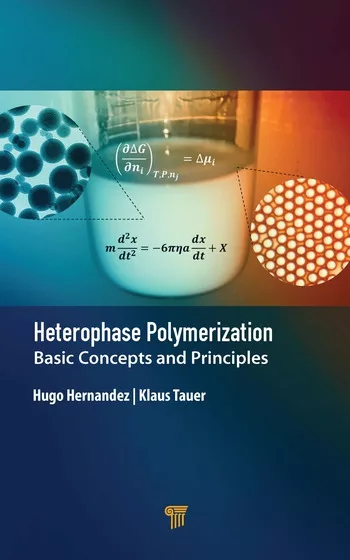Ask Dr. Dave
April 2004
Question: We are using an alkoxy-type RTV silicone to seal micro switches from moisture in an outdoor application and we're getting a few failures in the field. Analysis of the surface shows the presence of silicon on the metal. We would like to use a sealant that does not contain silicone to solve this problem, and our supplier has suggested a polyurethane sealant. What do you recommend?
Answer: I would certainly suggest that a silicone is the best sealant for this type of application based upon silicone's long track record of success. Polyurethanes are great sealants but don't typically have the long-term moisture resistance or weatherability of a silicone for critical applications. If you choose to use polyurethanes, I would encourage you to carry out long-term testing. I think your problem is caused by your use of a silicone that contains a small amount of volatile contaminants that can condense on the metal surfaces. These materials, called cyclic siloxanes, are normal byproducts of silicone manufacture and do not cause problems in most applications. In the early days of using oxygen sensors in auto exhaust manifolds, these volatile silicones were a major cause of failures until the source of the problem was identified. You should ask your supplier for a so-called "low volatile" silicone where these contaminants have been stripped out.
Question: Although you answer mostly specific industrial questions, could you give me your opinions on what are really the best DIY adhesives and sealants? For example, what do you use yourself at home for repairs or projects?
Answer: I have been fortunate in my career to have worked with several adhesives and sealant technologies and have tried all of them at home. We all have our own preferences and I do use several products regularly. I always have a tube of a superglue cyanoacrylate around for doing instant repairs. I have some fast-curing two-component epoxies for high strength repairs where gap filling is necessary. I find that the fast-curing epoxy putties or "ribbons" are incredibly useful for bonding and filling holes. I recently had my first experience with a two-component polyurethane adhesive at home and found it to be excellent with great adhesion and much more flexible than an epoxy. With sealants, I have always been a great fan of silicones because of their water resistance and durability, but have personally never been able to tool them correctly to get a good-looking caulking job despite trying all the recommended tricks and tools! I recently used a water-based acrylic caulk around the edges of a tile floor and found it to be incredibly easy to tool with a damp sponge - only time will tell if it has the durability of silicone.
Questions for publication should be directed to Dr. Dave Dunn at 242 Trails End, Aurora OH 44202. 330-562-2930. FAX 253-681-8460, e-mail DrDave242@att.net . http://www.fldenterprises.com .
Question: We are using an alkoxy-type RTV silicone to seal micro switches from moisture in an outdoor application and we're getting a few failures in the field. Analysis of the surface shows the presence of silicon on the metal. We would like to use a sealant that does not contain silicone to solve this problem, and our supplier has suggested a polyurethane sealant. What do you recommend?
Answer: I would certainly suggest that a silicone is the best sealant for this type of application based upon silicone's long track record of success. Polyurethanes are great sealants but don't typically have the long-term moisture resistance or weatherability of a silicone for critical applications. If you choose to use polyurethanes, I would encourage you to carry out long-term testing. I think your problem is caused by your use of a silicone that contains a small amount of volatile contaminants that can condense on the metal surfaces. These materials, called cyclic siloxanes, are normal byproducts of silicone manufacture and do not cause problems in most applications. In the early days of using oxygen sensors in auto exhaust manifolds, these volatile silicones were a major cause of failures until the source of the problem was identified. You should ask your supplier for a so-called "low volatile" silicone where these contaminants have been stripped out.
Question: Although you answer mostly specific industrial questions, could you give me your opinions on what are really the best DIY adhesives and sealants? For example, what do you use yourself at home for repairs or projects?
Answer: I have been fortunate in my career to have worked with several adhesives and sealant technologies and have tried all of them at home. We all have our own preferences and I do use several products regularly. I always have a tube of a superglue cyanoacrylate around for doing instant repairs. I have some fast-curing two-component epoxies for high strength repairs where gap filling is necessary. I find that the fast-curing epoxy putties or "ribbons" are incredibly useful for bonding and filling holes. I recently had my first experience with a two-component polyurethane adhesive at home and found it to be excellent with great adhesion and much more flexible than an epoxy. With sealants, I have always been a great fan of silicones because of their water resistance and durability, but have personally never been able to tool them correctly to get a good-looking caulking job despite trying all the recommended tricks and tools! I recently used a water-based acrylic caulk around the edges of a tile floor and found it to be incredibly easy to tool with a damp sponge - only time will tell if it has the durability of silicone.
Questions for publication should be directed to Dr. Dave Dunn at 242 Trails End, Aurora OH 44202. 330-562-2930. FAX 253-681-8460, e-mail DrDave242@att.net . http://www.fldenterprises.com .
Looking for a reprint of this article?
From high-res PDFs to custom plaques, order your copy today!





